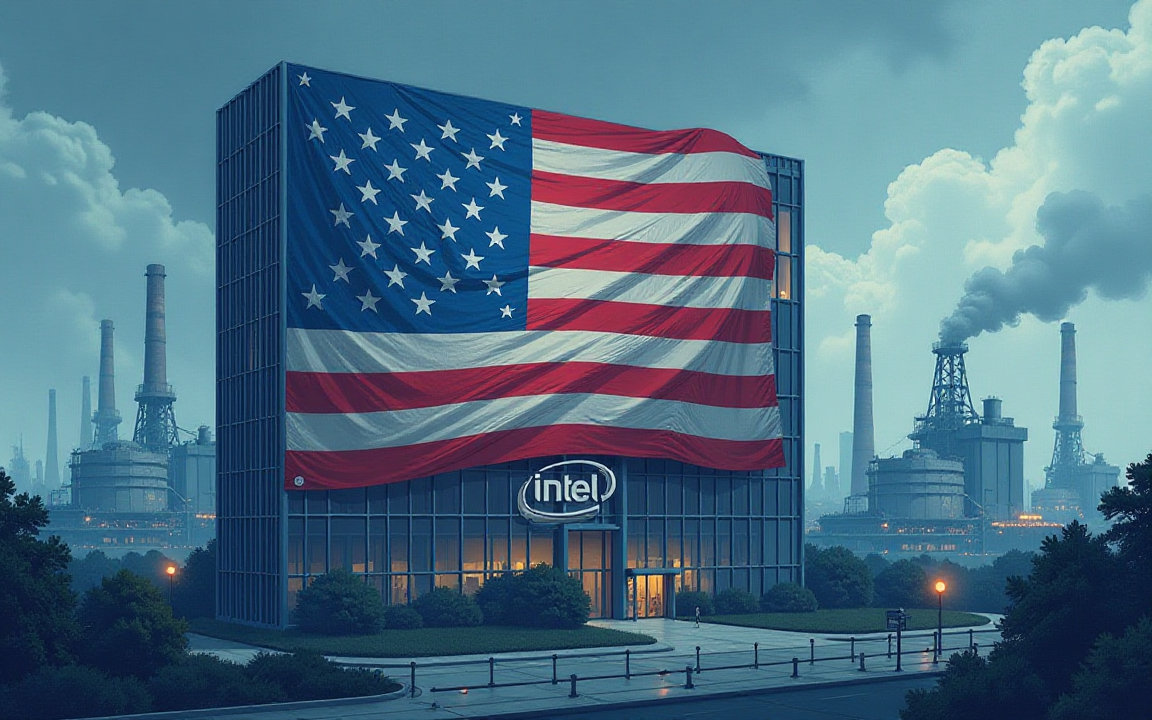
US government’s investment in Intel may not be enough for turnaround: here’s why
The US government will invest nearly $9 billion into Intel Corp. (NASDAQ: INTC) in exchange for a 9.9% equity stake, marking a rare and extraordinary intervention in corporate America.
While the move signals Washington’s determination to revive domestic chip production, analysts warn the cash injection may not solve Intel’s deeper challenges in its foundry business.
Funding fails to address core business risks
The investment, first reported on Friday, comes from funds Intel was already slated to receive under a federal act supporting semiconductor production.
Though substantial, analysts argue the capital does little to address Intel’s biggest obstacle: securing customers for its advanced manufacturing processes.
Intel’s new CEO, Lip Bu Tan, cautioned last month that the company may have to abandon its contract-chipmaking unit if it cannot land major clients.
“Going forward, our investment in Intel 14A will be based on confirmed customer commitments,” Tan said.
Industry analysts echo the concern.
Summit Insights’ Kinngai Chan told Reuters that Intel must lock in enough client volume to make its 14A and 18A nodes viable.
Without such commitments, even billions in government funding cannot guarantee success.
Previously, another Reuters report said that Intel’s 18A process is already experiencing yield problems, raising questions about the company’s ability to compete with Taiwan Semiconductor Manufacturing Co. (TSMC), which has maintained a lead in both technology and efficiency.
Investor reaction and governance concerns
Intel shares closed 5.5% higher on Friday following the announcement, but slipped 1% in after-hours trading once the deal terms were disclosed.
The stock is still up 23% this year amid major restructuring efforts, including significant job cuts announced by Tan.
Under the agreement, the federal government will not take a board seat but has pledged to vote in line with Intel’s board on shareholder matters, with “limited exceptions.”
The government is acquiring shares at a 17.5% discount to Friday’s closing price, making it Intel’s largest shareholder once the transaction is complete.
The deal also includes a five-year warrant allowing the government to purchase an additional 5% stake at $20 per share if Intel’s ownership of its foundry business falls below 51%.
Some market participants see risks in the arrangement.
CreditSights analyst Andy Li pointed to concerns about governance and the extent to which government oversight could affect Intel’s ability to prioritise shareholder interests.
Political and strategic context
The government’s $8.9 billion equity injection is in addition to $2.2 billion in grants already awarded, bringing the total public investment in Intel to $11.1 billion.
The move follows a $2 billion capital infusion from Japan’s SoftBank earlier this week.
The White House framed the deal as part of President Donald Trump’s push to bring manufacturing jobs back to the United States and secure supply chains in critical industries.
“This is a great deal for America and, also, a great deal for Intel. Building leading edge semiconductors and chips, which is what Intel does, is fundamental to the future of our nation,” Trump said on Friday.
Still, analysts caution that financial support alone will not resolve Intel’s operational challenges.
Without improvements in chip yields and strong customer commitments, the company’s foundry business remains on uncertain ground—even as the US government becomes its largest shareholder.
The post US government’s investment in Intel may not be enough for turnaround: here’s why appeared first on Invezz
